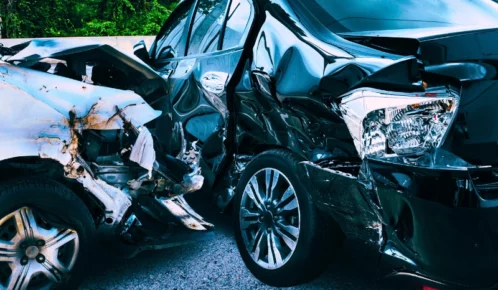Claimants working to recover damages after an accident may wonder, “what does litigation mean in a personal injury case?” In personal injury cases, litigation entails suing negligent parties for causing accidents and subsequent injuries and other damages through a civil lawsuit. In other words, what litigation means in a personal injury case is that a lawsuit has begun. In this lawsuit, victims involved who have sustained injuries or other types of damages seek compensation from the party responsible for them.
Table of Contents
There are several types of damages that injury victims may seek through personal injury litigation. These damages could include medical expenses, lost wages due to time needed to recover, property damage, pain and suffering, and other potential damages.
When Litigation Takes Place
The majority of personal injury cases settle out of court before litigation ever takes place. Many cases involve relatively minor injuries and a general simplicity that leads both the claimant and the negligent party to come to an agreeable settlement during the claims process.
Typically, following an accident involving negligence and subsequent injuries, victims would file a claim with the negligent party’s insurance company to begin negotiating a settlement. However, if neither party can agree to a settlement, the case may go to court and the litigation process will begin. This may take place when large settlements are involved and the nature of a case is more complex.
The Stages of Litigation in Personal Injury Cases
In most personal injury lawsuits, there are five core elements of the process. These include:
Pre-Trial Discovery
At the start of a lawsuit, both parties might need to gather enough evidence to support their arguments. The injury victim filing the lawsuit, or “plaintiff,” will need enough evidence to prove that the other party practiced negligence and that this negligence caused the accident and resulting injuries. Meanwhile, the other party, or “defendant,” will need to prove either that he or she wasn’t liable for damages or that the other party was at least partially liable.
The process of gathering evidence before the trial takes place is called discovery. This entails both parties or their attorneys serving discovery requests to each other, which leads to each party responding to the other’s request. For instance, a plaintiff’s attorney may want to request the defendant’s phone records to determine whether the defendant was on their phone at the time of an accident that caused the plaintiff’s injuries.
Motions
At some point during the litigation process, either the plaintiff or defendant may choose to file a motion, officially beginning the litigation. These motions may cover the exclusion or admission of evidence in court, and they may also cover expanded damages that plaintiffs may seek during the trial process.
Expert Witnesses
To help establish the personal injury facts involved in a particular case, attorneys on either side may decide to hire expert witnesses to testify in their favor. These expert witnesses could include a variety of professionals, including private investigators and doctors with extensive knowledge and experience. These experts could play a significant role in either helping or hurting a plaintiff’s arguments.For instance, a highly trained medical professional may help show that the plaintiff’s injuries are as severe as the plaintiff claims. This could eliminate any question as to the severity of the injury that might otherwise be present.
Preparation
Throughout the litigation process, plaintiffs and defendants, along with their attorneys, will prepare their cases to present them in hearings or during a trial. This process may involve speaking with witnesses and getting them ready to testify in court. It may also entail both filing and responding to each party’s motions.
Trial
Ultimately, the litigation process ends when the case goes to trial before a judge and jury. Following plenty of preparation, both the plaintiff and defendant will have the chance to present their cases and the evidence they collected during discovery.
In the process, expert witnesses will also be able to provide testimony in either party’s defense. Other witnesses involved in the case will also be able to provide testimony after having prepared it.
All the evidence and testimony presented will help the jury make a decision in the case and reach a verdict. The judge will then be able to end the litigation with a final judgment or order.
The Goal of Litigation
The goal of the litigation process is to reach a settlement that both sides involved can agree to by the end of the lawsuit. Once the plaintiff and defendant have reached a settlement, litigation will be complete. If a case winds up going to trial and either side is unhappy with the final verdict and settlement, the plaintiff or defendant may have the ability to appeal.
When to Seek Legal Assistance
Litigation is often complex and requires expertise to help navigate this process. While some personal injury cases involving minor injuries and small settlements may not require the help of a personal injury lawyer in Chicago or another city, cases involving certain complexities and large settlements at stake could benefit from the help of an attorney. This is particularly the case if a claim turns into a lawsuit.
Injury victims may not have sufficient experience in personal injury law, which could cause them to put themselves at risk throughout the claims process or litigation. Working with an experienced attorney may be the best way to adequately prepare a claim or lawsuit and secure the best possible outcome. Otherwise, making the wrong statements or failing to collect enough evidence to support a claim could minimize or eliminate the chances of reaching a favorable settlement.
From pre-trial discovery to preparation and the trial process, it’s important to know what litigation entails. Personal injury cases that go to trial can take more than a year to settle, depending on what they involve. Understanding what litigation means in personal injury cases can give plaintiffs a better idea of how to effectively prepare their cases with the help of an attorney. Further, this helps them to understand the types of personal injury damages to which they may be entitled.



